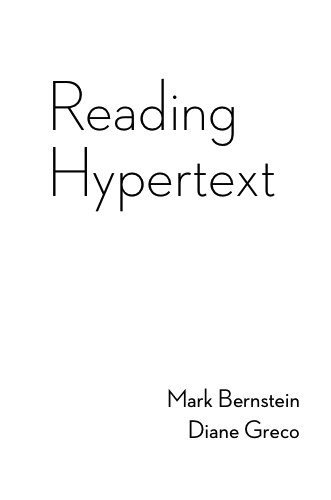Teaching: What to Read
Stacey Mason
In researching the ways in which hypertext is taught, I noticed that although more and more programs are offering new media courses, many instructors tend to focus on a limited number of fictional pieces, especially Patchwork Girl by Shelley Jackson, and afternoon, a story by Michael Joyce. Curious as to how teachers were selecting their pieces, I started asking around. Greg Ulmer of the University of Florida explained how he arrived at focusing his curriculum on the Electronic Literature Collection Vol. One:
When I first started teaching Internet Literature my approach to choosing the examples was to let the students create an anthology collaboratively. They were to browse the Internet, using some starting points I provided… The results were unsatisfactory, because students insisted on selecting Google, Amazon, eBay, YouTube (not individual videos but the site as a whole) encyclopedic information sites, various production tools or widgets for drawing, and the like. These were literature majors, and they agreed that print dictionaries, how-to books, catalogs and the like were not literature. But when similar supports or services were delivered digitally, students considered them to be "art" or at least representations of "new media". The next step was to use a list recommended by Christy Dena.
This list served as the "measure" of what was acceptable, but I still allowed browsing, with the idea that there was no "canon" of E-lit. When Hayles et al published the E-lit anthology, I welcomed it as a short-cut solution. The anthology is recognizable as being the equivalent of print anthologies with which students are familiar. It is convenient in providing a representative sample of a manageable size.
